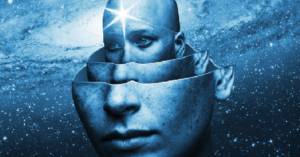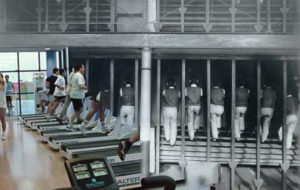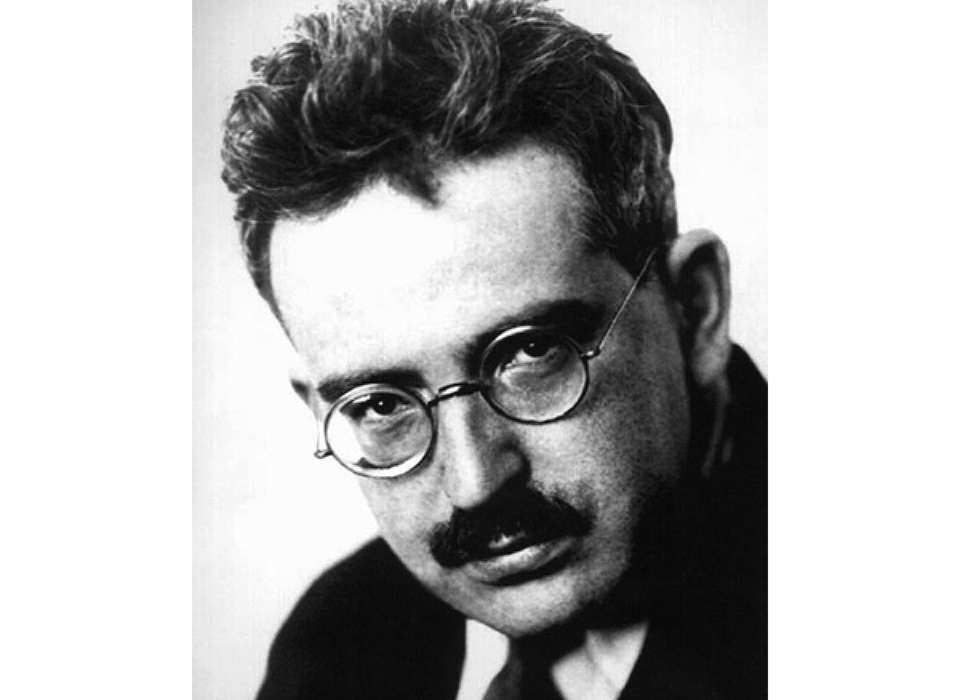In the contemporary theological and political order, the Frankfurt school of critical theory receives scant attention.1 This is unfortunate as it provides useful tools for the critique of religion and a useful framework to explore the possible dynamics between religious and so-called progressive social movements. Since the 1960s the school, or the institute as it is sometimes referred, has taken a turn toward issues of language and culture, most notably in the work of Jürgen Habermas. In its most prolific phase, from the 1930s to the 1950s, the school consisted mainly of dissident Marxists who believed that orthodox Marxist theory could not adequately explain the turbulent development of capitalist societies in the twentieth century, particularly with regard to the rise of fascism as a working-class movement. This led many of these dissident Marxists to take up the task of reappropriating Marxism in light of conditions that Karl Marx himself had never considered. The school has a clear genealogy, appropriating elements of Marxist materialism, Hegelian philosophy, German idealism, Gestalt psychology, and atheistic Jewish Messianism.2 This synthesized analysis gave expression to a transdisciplinary, anticapitalist intellectual tradition with both immanent (material) and transcendent (metaphysical or spiritual) themes.
In this essay I focus on the literature of the Frankfurt school, with attention to Marx and the neo-Marxist scholars Max Horkheimer, Walter Benjamin, and Ernst Block. Through a theological examination of these contributors, I will show that religion and Marxism are not antithetical but that both draw upon a common ground in the struggle against totalizing forms of capitalist power which leave the vast majority of the world’s population in misery. Both Marxism and Christianity have at their center a prophetic messianism, which is the belief in social transformation through action or event. Both share a belief in an alternative future whereby every tear will be wiped away and justice and equality will be achieved. By bringing the two together, I suggest that they may collaborate in serving those who experience the tyranny of advanced capitalist most severely.
Marx: A Re-examination of the Opium of the People
Orthodox Marxists have tended to dismiss religion, extracting a militant atheism from Marx’s writing.3 In contrast, a number of commentators have located Marx within a messianic tradition or within the utopian projects associated with the Judeo-Christian West. Such writers tend to be drawn to the dense and varied set of references and allusions to religious texts in Marx’s writings. Sympathetic Christian scholars have tended to soften Marx’s critique of religion by acknowledging his rejection of Christianity as an assault on the fetishism of religion and its use by elites rather than religion itself.
The premise of a Marxian analysis of religion is the oft-quoted “opium of the people.” However, what does it mean to equate opium with religion? A popularist reading drifts toward literalism, whereby opium is the drug that numbs pain, distorts reality, and provides an artificial source of solace. In that sense, one may conclude that religion functions as a panacea, an alter-reality construed by ruling elites to dull the people’s critical and revolutionary capacity. But such a reading is inconsistent with Marx’s intent. As the sociologist Andrew McKinnon suggests, this interpretation of the metaphor is inaccurate, missing the different and contradictory ways in which opium was understood in the nineteenth century. A historical analysis thus encourages us to “encounter the text dialectically, including the dialectic text that is the heart and spirit of Marx’s analysis of religion.”4
McKinnon argues that in the middle of the nineteenth century opium was largely used medicinally by Europeans and was considered an unquestioned good. Toward the end of the century, its medicinal use had been largely supplanted by other medicines, and it was becoming increasingly demonized by moral puritans. Furthermore, its use was becoming increasingly “luxurious” and commodified (and therefore profitable). Opposition to opium grew, especially from the “public health” and “temperance” movements.5 It was between these two eras that Marx penned opium as his metaphor for religion, a usage that McKinnon describes as “an ambiguous, multi-dimensional, and contradictory metaphor, expressing both the earlier and later understandings of the fruit of the poppy.”6 Several connotations, then, would have been relevant at the time: medicine, a source of profit, and a source of utopian vision. For the purposes of this essay, the image of religion as a utopian vision is of particular interest.
Marx’s critique of religion owes an intellectual debt to Ludwig Feuerbach,7 yet his conclusions are very different. Whereas Feuerbach presents religion as the abstract projection of human needs and desires onto the universe, Marx roots religion in the political and the economic or, more significantly, in a material dialectic. Marx’s analysis reads as follows:
Religious suffering is, at one and the same time, an expression of real suffering and a protest against real suffering. Religion is the sigh of the oppressed creature, the heart of a heartless world, and the soul of soulless conditions. It is the opium of the people. The transcendence [Aufhebung] of religion as the illusory happiness of the people is the demand for their real happiness. To demand to give up their illusions of their condition is a demand to give up a condition that requires illusions. The criticism of religion is therefore the germ of the criticism of the valley of tears whose halo is religion. Criticism has plucked the imaginary flowers from the chains, not so that man may throw away the chains without any imagination or comfort, but so that he shall throw off the chain and pluck the living flower.8
The word aufheben is often translated to mean “abolish,” but McKinnon suggests that “transcend” or “supersede” are more useful renderings. Marx uses the same word with regard to philosophy: “Philosophy cannot realize itself without transcending (aufhebund) the proletariat, and the proletariat cannot transcend (aufheben) without realizing philosophy.”9 Marx is aware that religion, in being both an expression and a protest, points to both material oppression and the possibilities of otherness. Revisiting the opium metaphor in this context suggests the ways in which religion may point toward utopian society. Although Marx moved away from words like utopia in his later work, he uses the idea of a utopian dream in a positive sense in Towards a Critique. That is not to say that Marx does not see religion as an illusion; rather, he argues that religion may be the imagination that opens other possibilities, a dialectical overcoming whereby the promise of happiness becomes actualized. The creation of this “real happiness” is to “break the chains and pluck the living flower,” which given the context, McKinnon notes, is clearly a reference to opium poppy.10
Several theorists in the Frankfurt school later pick up on this theme. The political philosopher and sociologist Max Horkheimer, for example, suggested the following:
The concept of God was for a long time the place where the idea was kept alive that there are other norms besides those to which society gives expression to their operation. . . . Religion is the record of the wishes, desires and accusations of countless generations.11
Building on this utopian dream, a number of critical theorists of the Frankfurt school have explored various forms of mysticism or spirituality within a Marxist framework. Such perspectives lend authority to the possibility of a progressive Marxist conception of spirituality. As Erich Fromm notes, Marx’s socialism “is essentially prophetic Messianism in the language of the nineteenth century.”12 Prophetic messianism became a significant theme within the Frankfurt school, particularly after the Second World War. This theme still offers a conceptual map for emancipation in today’s social movements, as it facilitates common ground between the transformative aspirations of religion and Marxism.
Horkheimer: The “Yearning” for the Wholly Other
As director of the Frankfurt Institute for Social Research during the Frankfurt school’s most influential and prolific phase (1930 to 1958), Horkheimer is often recognized as the creator of critical theory. Protests against human suffering and social injustice, coupled with a “longing for another world,” became permanent themes through his leadership. Perhaps more than any other member of the school, the line between Horkheimer’s Jewish heritage and theoretical work is frequently blurred. As Zoltan Tar notes, in such a way as to invoke Marx’s critique, “[Horkheimer’s] Jewish haute bourgeois background was the source of both his protest and his longing.”13 Redemption, one of the central categories in Judaic thought, thus becomes an important theme for Horkheimer, and the language used in critical theory becomes saturated with biblical terminology such as truth, falsehood, salvation [Erlosung], suffering [Leid], compassion [Mitleid], and reconciliation [Versohnung].
In the Dialectic of Enlightenment, Horkheimer and his Frankfurt colleague Theodor W. Adorno set out to answer “Why mankind, instead of entering into a truly human condition, is sinking into a new kind of barbarism.”14 By 1939, the possibility of a capitalist society changing into a socialist society by means of the proletariat alone had been unmasked as an illusion. Horkheimer hoped for an emancipatory notion of enlightenment, but his concern was that enlightenment had become no more than dominant positivism and instrumental reason. He believed that a dialectical critique of enlightenment showed that the championed tide of progress contained within itself the kernel of its opposite, that being regression. Enlightenment had brought domination, bureaucratic totalization, the commodification of thought and language, and the tyranny of instrumentalism. The growth of economic productivity had turned man against man and, furthermore, man against nature (the ultimate form of instrumental control). This had been done within the “myth” of enlightenment, whereby reason had lost its intrinsic nature, and its worth had come to be determined only by its operational value. An activity had come to be considered reasonable only if it served another purpose, if it served as a mode of reification, which turns all human activities into commodities.
During the final years of his life, Horkheimer moved toward theology. Being cognizant of the importance of faith for the future of the world, he argued in a 1970 interview that the liquidation of religion by the enlightenment parallels the disappearance of meaning, and that the “death of God” entails the loss of absolute truth. In a subsequent interview he stated: “I do not believe there is any philosophy, that I could accept which does not include a theological element.”15 In both interviews Horkheimer refers to religion and social transformation as the yearning for the wholly other. Although his critique of ideology is particularly interested in the immanent, his later analysis becomes increasingly preoccupied with transcendence.
Horkheimer was conscious of the elimination of transcendence and idealism in Western thought. The near annihilation of the Jewish sense of otherness led him to a more positive evaluation of the metaphysical and theological movements that uphold the concept of transcendence, without which, he suggested, enlightenment thought decays into ideology and oppression. Therefore, the socio-philosophical importance of religion lies in its appeal to the transcendent, to the wholly other. Such a notion is reminiscent of Marx’s idea of religion as a utopian dream, which points toward a vision of a better society. For Horkheimer, this has a number of effects.
Firstly, it constitutes a critique of ideology. Although Horkheimer’s critique of ideology focuses on what is immanent, he introduces the concept of transcendence. Faith in the idea of transcendence is the surpassing of what is immediate. It is the consciousness that the world in appearance is not absolute truth. For Horkheimer theology is “the consciousness that the world is ‘appearance,’ that it is not the truth or ultimate end.”16 Horkheimer is critical of religious movements that replace one oppressive idol with another, yet he proclaims religious transcendence as the critical space of the imagination.
Secondly, the appeal to transcendence forms a praxis for the enactment of a new just society. In Critical Theory, Horkheimer understands philosophy (and theology) not as “other worldly speculation” but as the “struggle towards a sane world.”17 Theology becomes “the expression of humanity’s unappeased longing for justice.”18 Drawing on the biblical metaphors of original sin and reconciliation, he identifies a common interest of humanity in abolishing suffering. The aim of this theological articulation is to provide a new foundation for morality, one where a group of secular parishioners would somehow transform into a community striving for a better existence.
Finally, the longing for the wholly other bridges the relationship between religion and materialism. In a critique of the domination of enlightenment thought, Horkheimer observes: “All these wishes for eternity, and particularly for the entrance of universal justice and goodness, are shared by materialist and religious thinkers, as opposed to the dullness of the positivistic attitude.”19
Benjamin and Bloch: De-secularization, Re-enchantment, and Remembrance
Both Benjamin and Bloch state that Marxism is a secularization of Judeo-Christian messianism. Benjamin wrote that “Marx has secularized the messianic time in the conception of the classless society,” and similarly Bloch notes, “Messianism is the red secret of every revolutionary.”20 Their distinctive contribution is that their theories of secularization are dialectical, in that the sacred and the profane relate through dynamic tension. Although the two were similar in many ways, Bloch stood for the utopian future, whereas Benjamin stood for the redemptive and the anamnestic.
Bloch offered a Marxist sociology of religion. His approach was “to read the Bible with the eyes of the Communist Manifesto.”21 He identified Moses as a precursor to a messiah and as the founder of a religion of opposition. This image was later used in various manifestations of liberation theology. Bloch recognizes the possibility of a socialist utopia in the role of the biblical prophet, a utopia in which oppression and exploitation have been eliminated. Bloch presents his readers with a Marx who took up the scourge with which Jesus chased the moneylenders out of the temple.
Like Marx and Horkheimer, Bloch was committed to the exercise of unmasking ideology. On top of presenting a religious dialectic, he articulated a commitment to a utopian hermeneutic. He built a “redemptive ontology” from the principle of hope, and within this ontology, the role of the critical theorist was the emancipation of the material.22 Bloch is known as the greatest of the utopian philosophers, particularly because of the way he blended historical materialism with anthropological, religious, and existential questions. His belief in and work toward social transformation led critics to judge that Bloch was a prophet, much like Marx and Thomas Münzer.23 Although some later criticized Bloch for tending toward mysticism, he exerted a huge influence on the work of the Frankfurt school, as well as on key liberation theologians such as Jürgen Moltmann.
Benjamin receives similar criticism for tending toward mysticism and utopianism. Although heavily influenced by the messianic radicalism of Bloch and the Jewish mysticism of Gershom Scholem, Benjamin developed a greater interest in history,24 positing that dialectical thinking confronts and reclaims the past. Benjamin saw that memory can function as an appropriation of the past for revolutionary purposes; mythology and allegory give power to memory and create “horizons” where transcendence becomes possible. Allegory also provides a structure for conceptualizing the past, allowing the “shapelessness of material to take an eternally mutable shape within an immutable context.”25 Allegories, stories, and myths thus have the ability to endow the particular with symbolic properties; this makes it possible to transform the meaning of things.
These ideas were formative in the theologian Johann Metz’s conceptualization of anamnestic reasoning, which asserts that the changes and processes of human history, as well as its etiologies, can be traced historically. Anamnestic reasoning is not just the process of historical reflection; rather, it is the memory of suffering. Metz tells of his experiences on the front line of the German army. After wandering all night through destroyed, burning villages and farms, he returned in the morning to his company and found them all dead; “I could see only dead and empty faces, where the day before I had shared childhood fears and youthful laughter. I remember nothing but a wordless cry. Thus I see myself to this very day. . . . What would happen if one took this sort of remembrance not to the psychologist but into the Church?”26
Although the memory of the suffering of others was the leitmotiv of Metz’s theological project, it also proved to be a dominant theme in the Frankfurt school. Marx himself, however, seemed to have little use for memory as a radical tool, mocking earlier revolutions, such as the English and French, for seeking legitimacy in the mantles of their historical predecessors. Christian Lenhardt is highly critical of Marx’s world-historical amnesia, arguing that those who went before us are not “dead wood in the evolution of mankind, primitive stages which had to be overcome, and whose existence had better be forgotten.”27 Benjamin concurs, noting that “under the auspice of democratic socialism, the working class soon forgot what it is to hate and sacrifice oneself. Both hatred and the will to sacrifice are fueled by the image of enslaved ancestors rather than by the ideal of emancipated grandchildren.”28 For Benjamin, remembrance offers a rationale for the revolution, the development of a historic consciousness. As with many of the themes in the Frankfurt school, there would appear to be a fusion between the materialism of Marx and the heritage of Jewish theology. It is in their memories that people become a people, sharing their common stories and solidarities.
Benjamin highlights the intensive and extensive amnesia within modern capitalist society that relegates large parts of its history to the subconscious. Horkheimer and Adorno also support this claim. Adorno states, “Every reification is a forgetting: objects become thing-like at the moment when they are seized without all their elements being contemporaneous, where something of them is forgotten.”29 And Horkheimer and Adorno both note that “all reification is a forgetting.”30 This comes at a cost; not only does the loss of memory exclude the suffering of past generations, it also negates anamnestic solidarity. If reification is forgetting, then it stands that de-reification is remembering.
As Warren Goldstein notes, both Bloch’s and Benjamin’s theories of secularization run simultaneously in two directions; not only do they secularize theology, but they also theologize Marxism. Goldstein writes, “When describing Benjamin’s and Bloch’s theories, one not only needs to think in terms of ‘secularization’ but ‘desecularization,’ not only in terms of ‘disenchantment’ but ‘reenchantment.’”31 Benjamin and Bloch draw on tools rarely appropriated in orthodox philosophies, such as allegory and mythos.
Conclusion
I have shown that there are a number of themes emerging from the Frankfurt school of critical theory that open the path for collaborative opportunities between religious and social movements. Critical theory does not necessarily dismiss religion; rather, it can apply reason to religious claims, exploring dialectical opportunities between the sacred and the secular. By engaging in this kind of dialectic between religion and theory, the thinkers of the Frankfurt school show how Marxism and faith may together help us assess, and eventually overcome, the social inequalities and the contradictions that seem evident in advanced capitalist societies. Through the work of Horkheimer, we can, for example, explore the transformative potential of the yearning for the wholly other. This recalls the biblical vision of the just and transformed society, the New Jerusalem where all pain is banished and wholeness restored. In Benjamin and Block, we see an emergent redemptive ontology and a utopian hermeneutic. This is a prophetic messianism that borrows heavily from a Marxist typology of social transformation, as these thinkers layer their own religious theories on top of a complex reading of Marx’s own analysis, an analysis that refuses to be caricatured.
1. This essay is adapted from work submitted to University College Dublin for the degree of MSc in equality studies; Rob Clements, “Religion, Social Movements, and Critical Theory: Opportunities for Collaborative Social Activism” (MSc dissertation, University College Dublin, 2009).
2. Eduardo Mendieta, The Frankfurt School on Religion: Key Writings by the Major Figures (New York, NY: Routledge, 2005); and Zoltan Tar, The Frankfurt School: The Critical Theories of Max Horkheimer and Theodore W. Adorno (New York, NY: John Wiley & Sons, 1977).
4. McKinnon, “Opium as Dialectic of Religion: Metaphor, Expression, and Protest,” in Marx, Critical Theory and Religion, ed. Warren Goldstein (Boston, MA: Brill, 2006), 12.
5. Victoria Berridge and Edward Griffith, Opium and the People (London, UK: Allen Lane, 1980).
6. McKinnon, “Opium as Dialectic of Religion,” 12.
7. Feuerbach, The Essence of Christianity, trans. George Eliot (New York, NY: Harper, 1957).
8. Marx, “Critique of Hegel’s Philosophy of Right,” in Karl Marx: Selected Writings, ed. D. McLellan (New York, NY: Oxford University Press, 1977), 64.
10. McKinnon, “Opium as Dialectic of Religion,” 12.
11. Horkheimer, “Thoughts on Religion,” in Critical Theory: Selected Essays, trans. by M. O’Connell (New York, NY: Herder and Herder, 1972), 129
12. Fromm, Marx’s Concept of Man (New York, NY: Continuum, 1961), 5
13. Tar, The Frankfurt School (New York, NY: John Wiley & Sons, 1977), 18.
14. Horkheimer and Adorno, Dialectic of Enlightenment, trans. J. Cumming (New York, NY: Continuum, 1976), xi.
15. Tom Bottomore, The Frankfurt School (London, UK: Tavistock Publications, 1984), 131 and 131
17. Rupert Seibert, “Horkheimer’s Sociology of Religion,” in The Frankfurt School: Critical Assessments, ed. Jay Bernstein (London, UK: Routledge, 1994), 284.
19. Horkheimer, “Zu Theodor Haecker,” in The Frankfurt School: Critical Assessments, 290.
20. Benjamin, Gesammelte Schriften I, trans. Rolf Tiedemann and Hermann Schweppenhauser (Frankfurt, Germany: Suhrkamp, 1974), 1231; and Bloch, Atheism in Christianity: The Religion of the Exodus and the Kingdom, trans. by J. T. Swann (New York, NY: Herder and Herder, 1972), 240.
22. Eduardo Mendieta, The Frankfurt School on Religion (New York, NY: Routledge, 2005), 12.
23. Eric Bronner, Of Critical Theory and Its Theorists (Oxford, UK: Blackwell, 1984), 62.
24. Scholem (1897–1982) was a Jewish philosopher widely regarded as the founder of the modern academic study of Kabbalah.
25. Bronner, Of Critical Theory and its Theorists, 133.
26. Metz, A Passion for God: The Mystical-Political Dimension of Christianity (New York, NY: Paulist Press, 1998), 1, 2.
28. Benjamin, Illuminations: Essays and Reflections, trans. by H. Zohn (New York, NY: Schocken, 1969), 269.
29. Martin Jay, “Anamnestic Totalization: Reflections on Marcuse’s Theory of Remembrance,” Theory and Society 11, no. 1 (1982): 5.
30. Horkheimer and Adorno, Dialectic of Enlightenment, 274.
31. Goldstein, “Messianism and Marxism: Walter Benjamin and Ernst Bloch’s Dialectical Theories of Secularization,” Critical Sociology 27, no. 2 (2001): 247.
 Theodor W. Adorno (1903-1969) was a German philosopher, sociologist, psychologist, and a classically trained pianist and composer. An only child to Maria Calvelli-Adorno della Piana (a devout Catholic from Corsica and former professional singer) and Oscar Alexander Wiesengrund (an assimilated Jew who had converted to Protestantism and a successful wine-export businessman), his childhood was marked by a love (and wunderkind proficiency) for music and a growing tendency toward intellectual nonconformism.
Theodor W. Adorno (1903-1969) was a German philosopher, sociologist, psychologist, and a classically trained pianist and composer. An only child to Maria Calvelli-Adorno della Piana (a devout Catholic from Corsica and former professional singer) and Oscar Alexander Wiesengrund (an assimilated Jew who had converted to Protestantism and a successful wine-export businessman), his childhood was marked by a love (and wunderkind proficiency) for music and a growing tendency toward intellectual nonconformism.However, contrary to what he saw as a vacuous, useless culture in 20th century America, Adorno was an ardent believer in the radical transformative power of art.
 In Dialectic of Enlightenment (written with Max Horkheimer) Adorno argues that the horrors of the twentieth century were not a bug in the liberal system, but a rational end. As they write in the opening paragraph: “the fully enlightened earth radiates disaster triumphant.” If the ideas of the enlightenment took hold across Europe why did Europe descend into fascism and violence?
In Dialectic of Enlightenment (written with Max Horkheimer) Adorno argues that the horrors of the twentieth century were not a bug in the liberal system, but a rational end. As they write in the opening paragraph: “the fully enlightened earth radiates disaster triumphant.” If the ideas of the enlightenment took hold across Europe why did Europe descend into fascism and violence?
 Adorno and Horkheimer are most definitely not advocating a return to the past, nor do they romanticize the premodern world. This is why they apply their dialectical method of myth and enlightenment containing each other – ancient ways of understanding contained useful reflections on meaning, truth, and morality which contemporary society appears to lack, while the enlightenment contained the ability to turn matters of historical contingency or human relations into matters of fate.
Adorno and Horkheimer are most definitely not advocating a return to the past, nor do they romanticize the premodern world. This is why they apply their dialectical method of myth and enlightenment containing each other – ancient ways of understanding contained useful reflections on meaning, truth, and morality which contemporary society appears to lack, while the enlightenment contained the ability to turn matters of historical contingency or human relations into matters of fate.